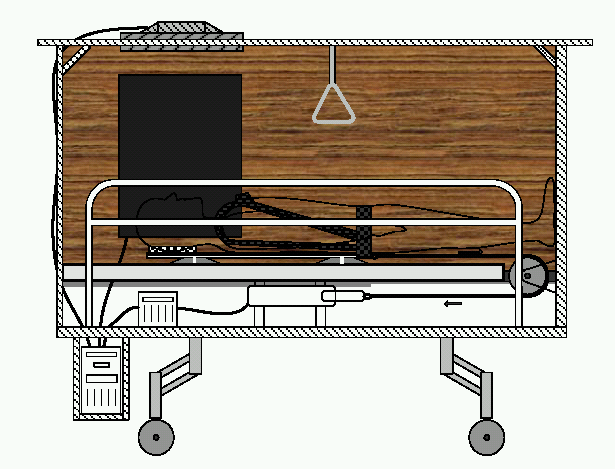3-D Automultiscopic Displays in the Treatment of Motor Functions and Balance

Team: S. Ince, J. Konrad
Collaborators: L. Oddsson, Neuromuscular Research Center at Boston University and S. Williams, Boston University Medical Center
Funding: National Institutes of Health
Status: Completed (2004-2007)
Background: Gait training using partial body weight support (BWS) is a neurorehabilitation technique that is used to enhance locomotor recovery in disorders related to brain injury including stroke, spinal cord injury, cerebral palsy, Parkinson’s disease, etc. and also due to prolonged depravation of gravity such as observed by astronauts in space. Early mobilization following any injury or disease that leads to immobility is crucial for recovery. Although the degree of effectiveness of BWS remains to be assessed, it is a complicated procedure requiring construction of a tilted environment for each patient in order to simulate gravity and induce visual feedback in a supine position.
Summary: In a joint effort lead by the Neuromuscular Research Center and Boston University Medical Center, we helped develop a new BWS system where the tilted environment is simulated electronically by means of a virtual visual field surrounding each patient. In particular, we developed an eyewear-free 3-D visualization system based on lenticular technology (Synthagram SG222 and SG202 displays from Stereographics Corp. ) and off-the-shelf digital point-and-shoot cameras. The idea is to capture 2-3 views of a scene familiar to the patient (his/her own house, garden etc,) and then reconstruct additional 6-7 views digitally on a computer for the total of 9 views that can be comfortably viewed on the 3-D screen and help in the process of regaining balance control. The main algorithmic part of the project was the development of advanced intermediate view reconstruction methods to recover the missing views. For details of view reconstruction algorithms used, follow this link.
Publications:
- L. Oddsson, C. Wall III, P. Meyer, and J. Konrad, “A virtual environment with simulated gravity for balance rehabilitation of bedridden patients and frail individuals,” in XV-th Congress of the International Society of Electrophysiology and Kinesiology, p. 55, June 2004.
- L. Oddsson, J. Konrad, S. Williams, R. Karlsson, and S. Ince, “A rehabilitation tool for functional balance using altered gravity and virtual reality,” in 5-th Int. Workshop on Virtual Rehabilitation, Aug. 2006.